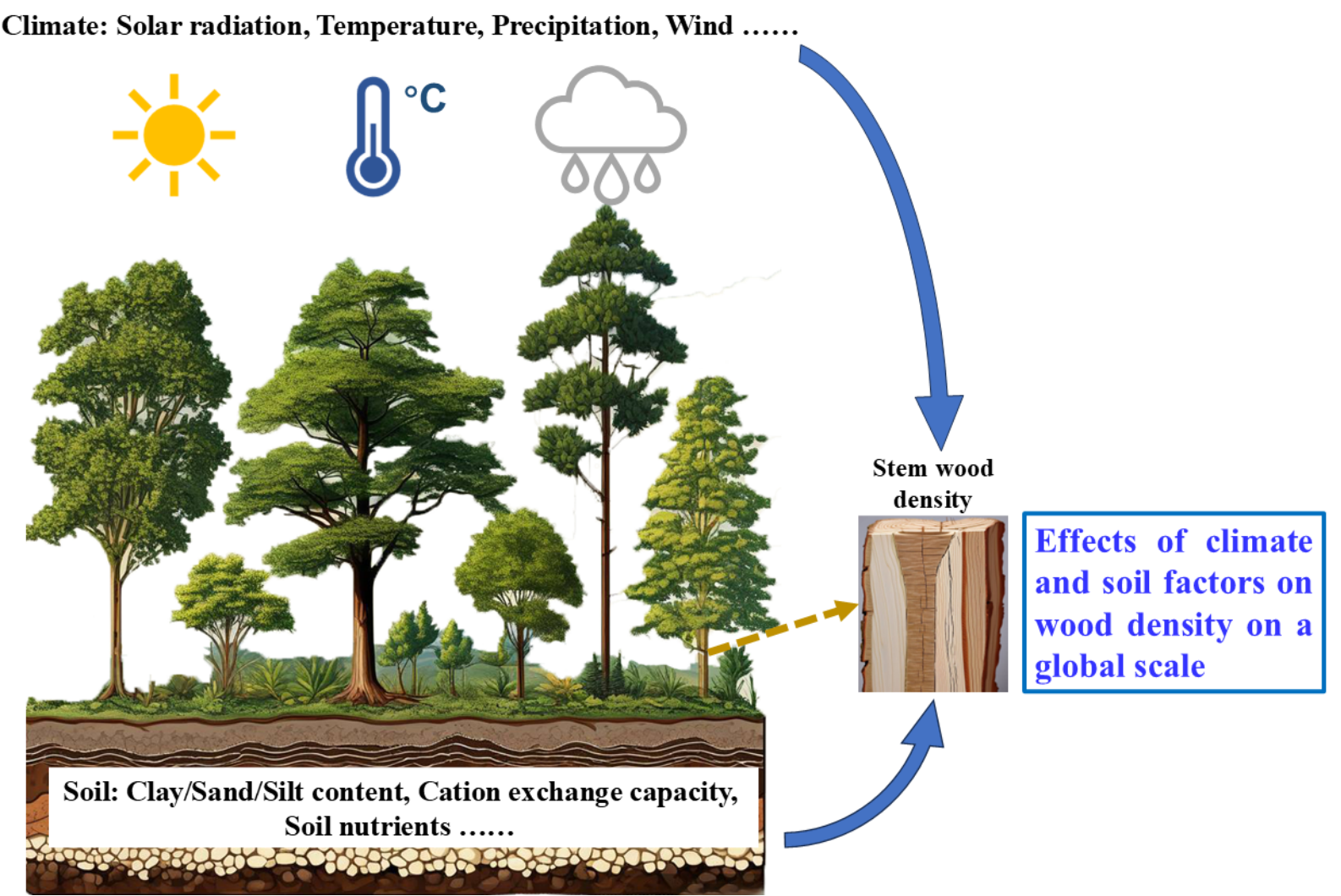New Research Uncovers How Climate and Soil Shape Tree and Shrub Wood Density Across Ecosystems
Date:2024-10-03
A recent study published in Advances in Atmospheric Sciences has provided new insights into how wood density in trees and shrubs adapts to different climate and soil conditions. Led by Dr. SONG Xiang from the Institute of Atmospheric Physics at the Chinese Academy of Sciences, the research offers a more detailed understanding of vegetation responses to environmental factors, with implications for improving Earth system models and dynamic global vegetation models (DGVMs).
Wood density, a critical trait for both the quality and function of plant species, plays a significant role in predicting vegetation distributions and ecosystem dynamics. However, current global models typically treat wood density as a uniform constant across plant functional types, such as broadleaf trees, needle-leaf trees, and shrubs. This generalization can lead to inaccuracies when predicting how different plant types interact with their environments.

Climate and soil factors have important effects on wood density of trees and shrubs. (Image by SONG Xiang)
“Our research shows that this simplification in current models could introduce serious biases,” explained Dr. SONG. “By incorporating the variability in wood density across different plant functional types and environmental gradients, we can greatly enhance the accuracy of simulations, particularly for tree morphology and forest dynamics.”
The team conducted an extensive analysis of 138,604 wood density observations from around the globe, examining how climate and soil factors influence wood density across six different functional types. Their findings reveal that for tree species, climate factors play a more dominant role than soil characteristics in determining wood density. In contrast, both climate and soil exert nearly equal influence on shrub species.
The models developed by the researchers showed strong predictive power, with correlation coefficients between observed and predicted wood density values ranging from 0.49 to 0.93 across all functional types. Notably, the predictions aligned well with actual wood density measurements across different climate conditions, underscoring the robustness of the findings.
“Our results highlight the importance of considering spatial variability in wood density when modeling vegetation dynamics,” Dr. SONG continued. “In future studies, we plan to integrate this spatial heterogeneity into DGVMs, which we expect will improve the simulation of forest characteristics, such as tree height and forest coverage, especially in central forest areas and transition zones.”
The study represents a significant step forward in understanding how vegetation adapts to environmental changes. By refining wood density parameterizations, the research could lead to more accurate predictions of ecosystem responses to climate change, aiding efforts to manage forests and other ecosystems more effectively.
